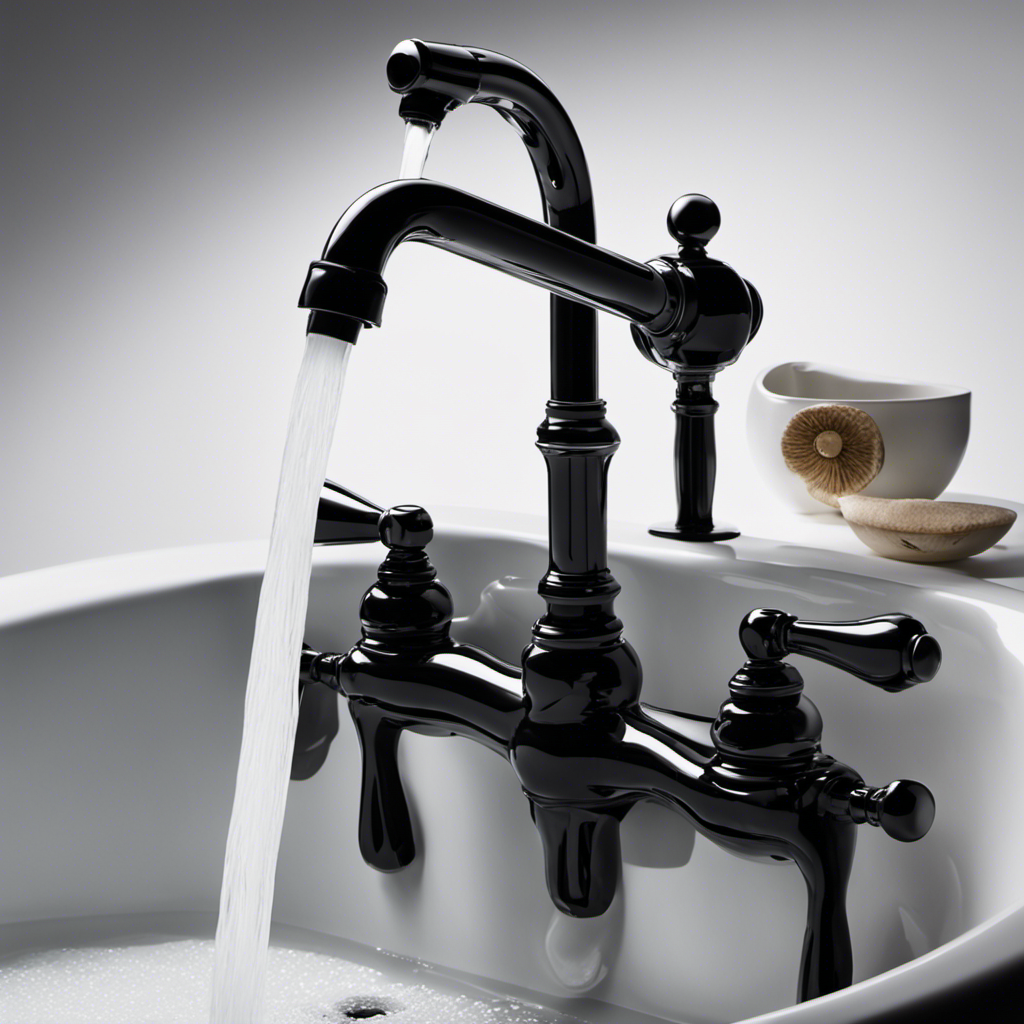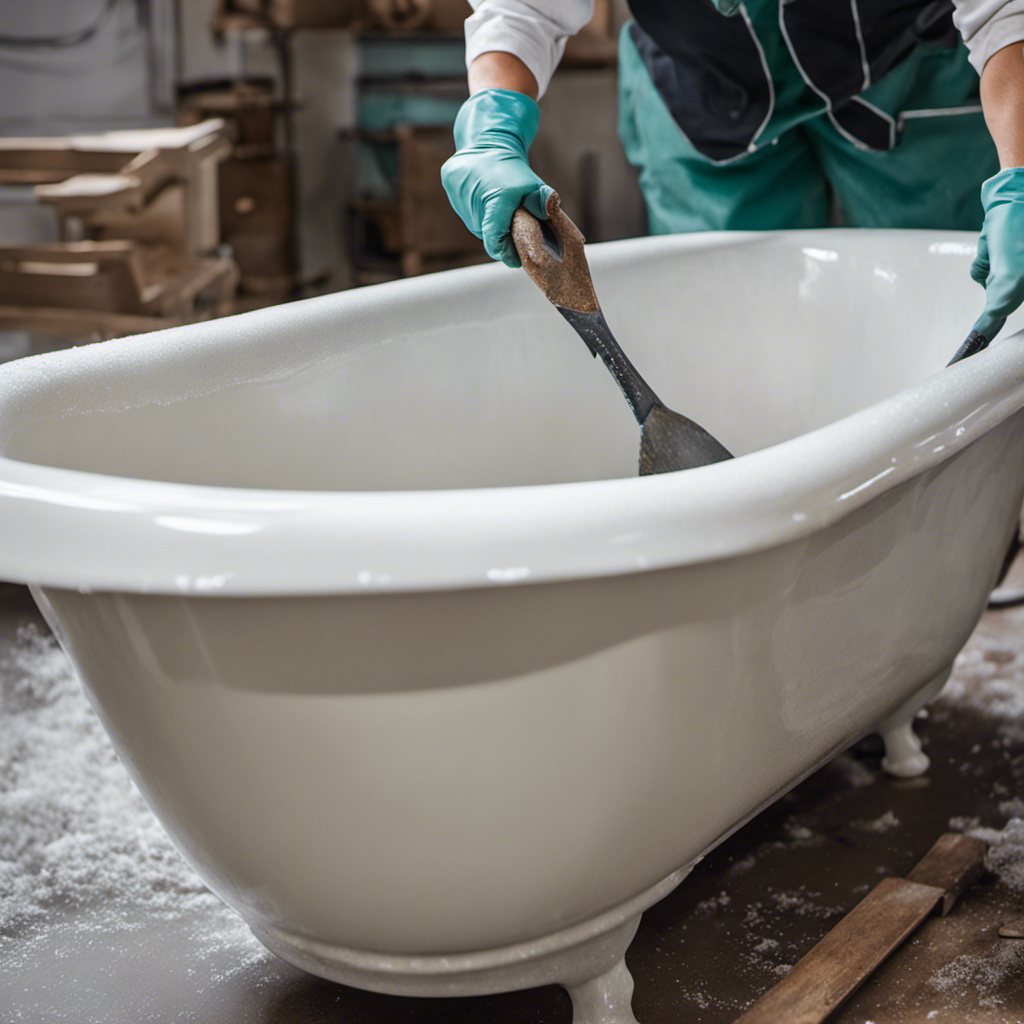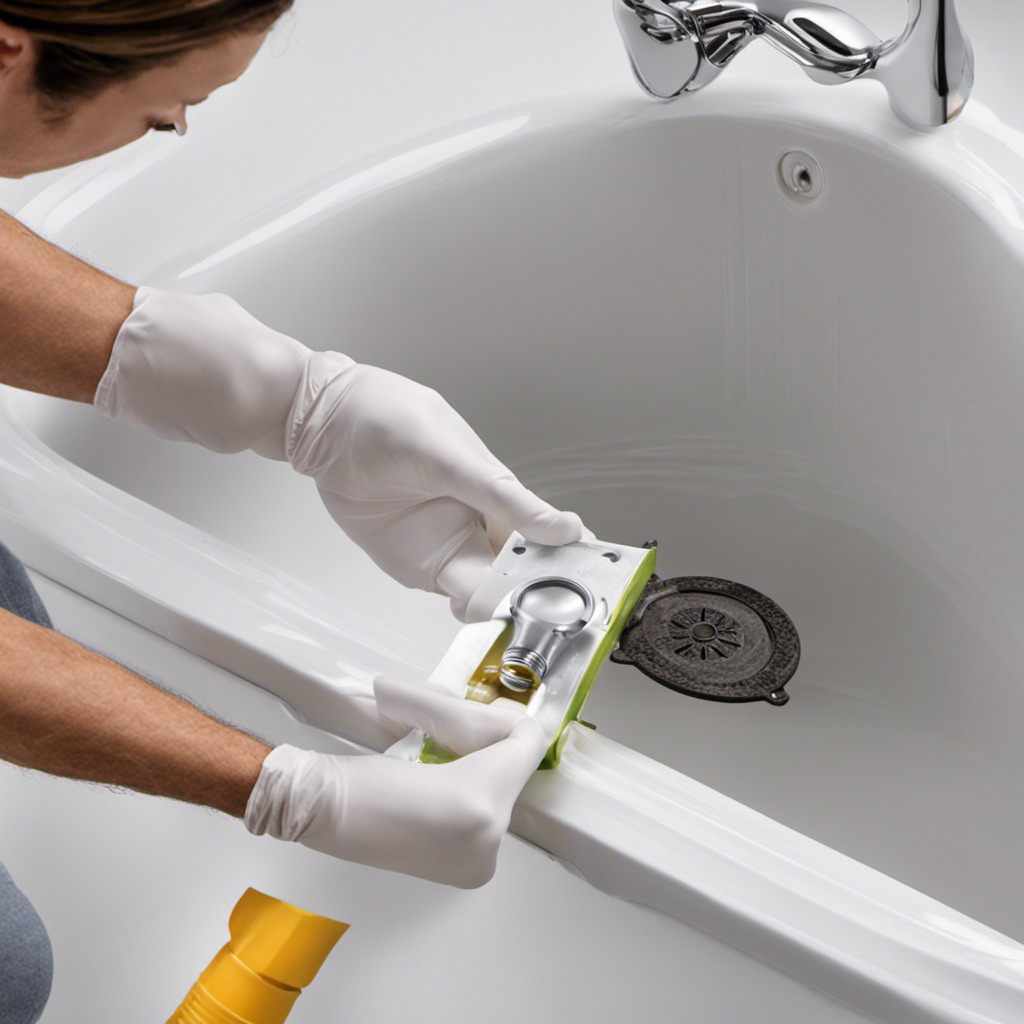Have you ever wondered why black stuff is coming out of your bathtub faucet? Well, I’m here to shed some light on this mysterious phenomenon.
In this article, we will explore the possible causes of black residue in your bathtub faucet, understand the composition of the black substance, and discuss its effects on water quality.
Furthermore, we will delve into how to identify and test for black contaminants in your faucet, as well as provide remedies and prevention methods.
So, let’s unravel the mystery together and find out why black stuff is appearing in your bathtub faucet.
Key Takeaways
- The black residue in the bathtub faucet may be caused by mineral deposits, mold or mildew growth, hard water, corroded plumbing pipes, or contaminants from the water supply.
- The black substance in the faucet is likely a result of mineral accumulation, reactions between minerals and other substances, and the presence of old or corroded pipes.
- The black stuff in the bathtub faucet can have negative effects on water quality, including potential health risks, damage to plumbing fixtures, and skin, respiratory, and gastrointestinal issues.
- To identify and test for black contaminants in the faucet, visual inspection, observation of water in a clear glass, water testing kits, and collecting water samples can be used. Regular cleaning and maintenance of the faucet aerator, as well as preventive measures, can help prevent black residue formation.
Possible Causes of Black Residue in Bathtub Faucet
One possible cause of the black residue in your bathtub faucet could be a buildup of mineral deposits. Mineral deposits, such as iron or manganese, can accumulate over time in your plumbing system, especially if you have hard water. These deposits can break loose and mix with the water, resulting in the black residue you see in your faucet.
Other potential sources of black residue could be mold or mildew growth within the faucet or plumbing lines. It is important to address these issues promptly as they can pose health risks. Mold and mildew can release spores into the air, which can cause respiratory problems and allergic reactions.
If you notice black residue in your bathtub faucet, it is recommended to have a professional plumber inspect and clean your plumbing system to ensure the water is safe and healthy.
Understanding the Composition of Black Substance in Faucet
To understand the composition of the dark substance in your faucet, it’s important to investigate its origins and potential causes. This black substance can be a cause for concern, as it may indicate a problem with your bathtub faucet that needs attention. Proper maintenance of your bathtub faucet is crucial to ensure the well-being of your household, as it can contribute to both health and plumbing issues.
One of the main reasons for the presence of black residue in your faucet is the accumulation of mineral deposits, such as iron or manganese, in your water supply. These minerals can react with oxygen and other substances, resulting in the formation of a dark substance. Additionally, if your plumbing system contains old or corroded pipes, it can contribute to the presence of black residue.
To further understand the composition of this black substance, let’s take a look at its potential causes and their effects on bathtub faucet maintenance and health concerns:
| Potential Cause | Effects on Bathtub Faucet Maintenance | Health Concerns |
|---|---|---|
| Mineral Deposits | Clogging and reduced water flow | None, unless consumed |
| Corroded Pipes | Leakage and further damage to plumbing system | None, unless consumed |
| Bacterial Growth | Foul odor and possible contamination | Health risks if consumed |
Effects of Black Stuff in Bathtub Faucet on Water Quality
Investigating the effects of the dark substance in your faucet on water quality is crucial to ensuring the safety and purity of the water you use.
The presence of black residue in your bathtub faucet can pose potential health risks and can also impact the longevity of your plumbing system.
The black contaminants, if left unchecked, can contaminate the water flowing through your faucet, leading to potential health issues such as skin irritation, respiratory problems, and gastrointestinal disorders.
Furthermore, these contaminants can also cause corrosion and damage to your plumbing system, resulting in costly repairs and reduced lifespan of your fixtures.
Therefore, it is important to understand how to identify and test for black contaminants in your faucet to promptly address any potential issues and ensure the quality of your water supply.
How to Identify and Test for Black Contaminants in Faucet
If you suspect that there are contaminants in your faucet, there are a few steps you can take to identify and test for them.
First, visually inspect the water coming out of the faucet. Look for any discoloration, particles, or residue that may indicate the presence of contaminants.
You can also fill a clean, clear glass with water from the faucet and observe it closely. If you notice any unusual color or sediment settling at the bottom, it could be a sign of contamination.
To further test for contaminants, you can use a water testing kit. These kits typically include test strips or vials that can detect various contaminants, such as heavy metals, bacteria, or chemicals.
Follow the instructions provided with the kit to collect a water sample, perform the test, and interpret the results accurately.
Remedies and Prevention for Black Residue in Bathtub Faucet
One way you can prevent and address the issue of black residue in your bathtub faucet is by regularly cleaning and maintaining the faucet aerator.
The faucet aerator is a small device located at the end of the faucet spout that controls the flow of water. Over time, it can accumulate mineral deposits and other debris, leading to the formation of black residue.
To clean the aerator, start by turning off the water supply to the faucet. Then, unscrew the aerator from the faucet using a pair of pliers or a wrench. Rinse it thoroughly with water to remove any loose debris. If there are stubborn deposits, you can soak the aerator in vinegar overnight to dissolve them.
Conclusion
In conclusion, discovering black stuff coming out of your bathtub faucet can be alarming. However, understanding the causes and effects of this issue is crucial for maintaining water quality in your home.
By identifying and testing for black contaminants, you can take the necessary steps to address the problem. Implementing remedies and prevention methods will help ensure that your bathtub faucet remains free from black residue.
So, ask yourself, wouldn’t you want to have clean and safe water flowing from your faucet?










